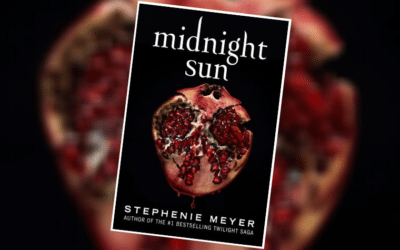For many, the answer was unexpected.
The controversy of how this novel came to fruition played out like a Hollywood tale: Lee originally submitted Go Set a Watchman as her debut novel. The publisher saw the potential in the novel but felt it could be something more, telling the author to focus more on the childhood of the protagonist, Jean Louise Finch. Two years later, To Kill a Mockingbird debuted and became an instantaneous classic. Go Set a Watchman became an idea of the past, and for 55 years TKAM was Lee’s first and only novel. Until now. Some questioned the new novel’s release: was it in accordance with Lee’s permission or was it a publicity opportunity for certain involved parties?
No matter what you believe, the novel is here, and I, for one, was excited to return to Maycomb County.
Warning: This review will contain slight spoilers. Even if I do “spoil” something, you should still read this book.
The story opens with a train ride from New York City to Maycomb County Junction: twenty-six year old Jean Louise Finch is returning to her childhood hometown for a brief visit. But her time in Maycomb is anything but quiet for both the protagonist and the reader. Within the first chapter, the reader’s heart breaks over learning about the death of Jem, Scout’s beloved older brother and confidant, dying from the same heart disease that killed the children’s mother. And if that wasn’t soul crushing enough, Scout’s discovery about her father Atticus is perhaps the most unkindest cut of all: the man who in TKAM believed in justice for all and hatred for none, has joined the Maycomb Citizens’ Council, an organization to help preserve Maycomb’s traditional, segregated ways.
And it’s those saddening realizations that drive the novel. The title, taken from scripture (Isaiah 21:6) symbolizes the theme of disillusionment:
“For thus hath the Lord said unto me, Go set a watchman, let him declare what he seeth.”
In my opinion, Jean Louise is our watchman, and what she’s sees opens not only her eyes to the pain of segregation and inequality but our eyes as well in a time when we still have to remind ourselves that all lives matter.
Like everyone else, I was shocked by this news: Atticus Finch was the epitome of honesty, justice, and equality. How could this be? How could he be like this? Needless to say, I was afraid to start this book. And then I opened it and began to read.
When you read Go Set a Watchman, think of it not as Atticus’ downfall but Jean Louise’s maturation. In To Kill a Mockingbird, through the child eyes of Scout, we all fell in love with Atticus, whether it was during that front porch discussion over compromise or watching him defend an innocent man. In the sequel, we now see Atticus through the mature eyes of Jean Louise, and she isn’t alone in that courthouse balcony watching her father in this meeting – we, as readers, are with her and feeling the same anger, hurt, and shock she feels.
The novel beautifully explores what happens when childhood disillusionment naturally fades into jarring clarity. What happens when a childhood superhero is unmasked as just a man who makes mistakes? What happens when our childhood gods are nothing more than human beings?
The book shows that it wasn’t Atticus who had changed, it was Scout. She left the boundaries and comfort of Maycomb, and in doing so, opened her eyes to a world beyond the small Alabama town. And because of this, she was able to stand up to him. She was no longer just his daughter but his equal, an individual who could stand on her own, which is what her father had wanted all along for his child.
But this story isn’t just about Jean Louise and Atticus. Even though he may be gone, Jem is not forgotten, and the relationship between brother and sister is in the constant forefront of his sister’s mind. Her memories of him cause us to mourn his loss, remembering him as a protective older brother who had so much promise. Familiar characters also return: Aunt Alexandra and Jean Louise’s relationship is still the perfect balance of annoyance and love. In a bigger role, Uncle Jack returns and his guidance leads Jean Louise to better understand her father. Finally, one of the most bittersweet returns is that of Calpurnia. Through Jean Louise’s memories, we see the Finch family caretaker taking the pubescent Scout under her wing, guiding her through the treacherous terrain of budding womanhood. When Jean Louise returns to her hometown, that relationship is tainted by the death of Jem, the weight of Maycomb’s oppression, and the years spent apart.
This is not a perfect story: there are some moments that dragged on and some that, in my opinion, bogged down the storyline. But knowing that it was unedited and Lee’s first attempt at writing a novel, fans will see those qualities that made us fall in love with Mockingbird: the characters, the voice, those moments that brought tears to our eyes, those moments that stirred our blood, and those moments that warmed our hearts.
If you’re still hesitant about reading Go Set a Watchman, read this exchange between Atticus and his daughter after their heated confrontation:
“Atticus?”
“Ma’am?”
“I think I love you very much.”
In the end, Jean Louise Finch represents all of us.
What were your thoughts on Go Set a Watchman? Let us know your opinions in the comments or send us a tweet! And don’t forget to check out this month’s Boozy Book Club selection!





